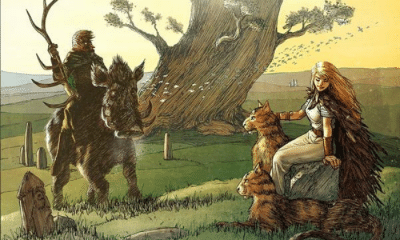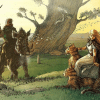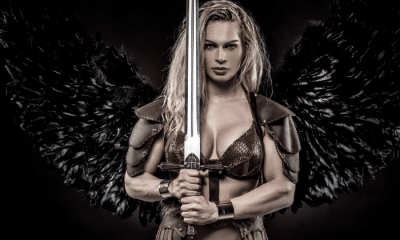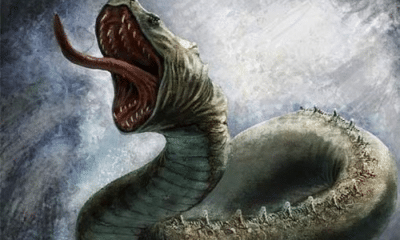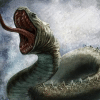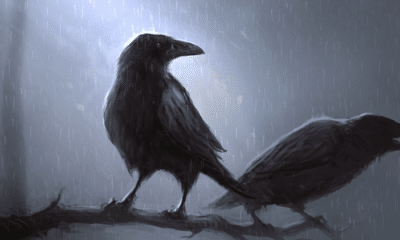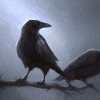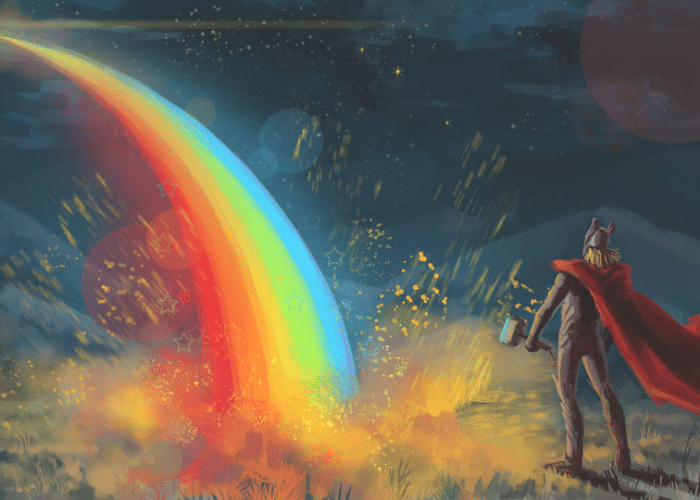
Norse
The Bifrost Bridge Connecting Heaven and Earth
The Bifrost Bridge Connecting Heaven and Earth
Every day, the Norse gods travel down a rainbow path to approach the world of men. The Bifrost bridge is iconic, but it might not have always been pictured in the same way as it is today.
In one Old Norse poem, a mythological figure laughs at the question of how the gods travel to the world of men. He considers it common knowledge that the gods built a bridge between their world and ours.
That bridge is the Bifrost, and it is one of the most famous elements in the world of Norse mythology. The image of the gods riding the length of the rainbow on horseback has inspired artists and musicians throughout the ages.
The full story of the Bifrost, however, is more complicated than just the fantastical image of the shining multi-colored bridge.
While the Bifrost connected two worlds, it was also only meant to be crossed by one group. The Aesir gods took pains to ensure that no one else used the bridge to reach their home world.
These precautions would not be enough, however. At Ragnarok the bridge would fall as the world was destroyed.
The Bifrost Bridge in Norse Mythology
Along with features like the World Tree and the great halls of the gods, the Bifrost bridge may be one of the most iconic features of Norse mythology.
According to legend, the gods built a spectacular arching bridge to connect the world of men to their own realm, Asgard.
Every day, according to some sources, the gods ride their magnificent horses across the bridge to reach their meeting place, the Well of Fate near the World Tree’s roots. The only god who does not ride is Thor, who instead wades through the boiling waters beneath the bridge to reach Midgard.
The gods also traverse the Bifrost every time they have special business in the world of men. When Odin seeks information or Freyja watches over a battlefield, they travel across the bridge they made to Midgard.
In most interpretations, the Bifrost is a great rainbow that carves a perfect path across the sky. In the Prose Edda, Snorri Sturluson says that the Bifrost shimmers with three colors and exceeds any other construction of the gods or men.
The three colors of the rainbow bridge are more than just a decorative element.
Sturluson claims that the red line in the bridge is a stripe of burning fire. This is one of the main defenses of Asgard.
The jotnar, or giants, are the gods’ greatest enemies in many myths. Several types exist in many worlds.
The red fire that burns on the Bifrost provides protection from the ice giants of Niflheim and the mountain giants of Jotenheim. The threat of burning fire is enough to keep them from ever attempting to cross the magical bridge.
The Bifrost also as a god dedicated to its defense.
Heimdall’s hall, Himinbjorg, is positioned near the end of the Bifrost in Asgard. From there, he can keep a constant watch on the bridge to make sure no one attempts to reach Asgard with the approval of the gods.
This, along with the difficulty in finding the bridge’s end in Midgard, keeps wayward humans from trying to reach the home of the gods. Men, however, are not the greatest threat to Asgard.
Prophesies in Norse mythology claim that the Bifrost will be assaulted once, at the onset of Ragnarok.
The fire giants of Muspelheim, let by Surt, will reach out of their realm and flood into the world of men. From there, they will reach the Bifrost and attempt to cross into Asgard.
When Heimdall sees this, he will sound his horn to alert the other gods. This marks the official beginning of Ragnarok.
The fire giants, however, will not be successful in crossing the bridge. Although it is exceptionally strong, the Bifrost will crack under the weight and heat of Surt’s giant horde.
The Poetic Edda, however, provides a different version of the bridge’s collapse. It says that the gods themselves will break the Bifrost as the cross to the battlefield on Midgard.
Although the Bifrost will be cracked, it is not entirely destroyed when Ragnarok begins. Some poets claimed that Heimdall would remain on the bridge and fight Surt there to prevent him from being able to cross into Asgard.
The fighters would have a view of most of Midgard, including the battlefield of Ragnarok, from their position on the bridge. Heimdall and Surt would fatally wound one another but, according to prophesy, Surt would not die until he saw the end of the battle and the world consumed in flames.
My Modern Interpretation
The Bifrost is usually shown as a rainbow marking an arch in the sky.
Many scholars have pointed to this interpretation and the unusual actions of Thor as evidence for early explanations of the world.
Many ancient religions used their myths to explain natural phenomena. Things that are easily understood by modern science were believed to be the actions of gods or spirits in the past.
The Poetic Edda specifies that Thor does not ride across the bridge like the other gods do. Instead, he wades through boiling hot water beneath the bridge, which is said to burn with flames as well.
Some scholars see this passage as an explanation for the way a rainbow appears in the sky.
Thor was the god of thunder, so he was responsible for storms.
Today we know that rainbows appear when the sun shines after a rainstorm because of the refraction of light through water droplets in the air. Ancient people, however, would have to imagine a reason for the connection between the storm god and the colors in the sky.
Scholars interpret the story of Thor wading through the hot water as symbolizing the heat and humidity that are felt when the sun comes out after a storm. When this happens, the rainbow appears to burn in the sun’s heat.
Thor cannot ride across the bridge because the rainbow does not appear until the strongest part of a storm has passed.
The name of the Bifrost also provides clues to the way the Norse people viewed the mythical bridge.
Unlike many names in Norse mythology, Bifrost does not directly translate into a known word.
In interpreting the path as a rainbow, most scholars use the alternative name for the bridge given in the Poetic Edda. There, it is called the Bilrost.
The Norse word bil meant “a moment.” Thus, the name can be translated as “The Momentary Path,” referring to the fleeting nature of a rainbow.
The name Bifrost may have an alternative meaning, however.
In Old Norse, bifa meant “shimmering.” The Shimmering Path could have been a rainbow, but another explanation is possible.
Some scholars believe that the shimmering Bifrost originally referred to the Milky Way instead of a rainbow. Rather than appearing in the sun, the path to the gods’ realm was only visible at night.
While the Bifrost is usually called the rainbow bridge, both explanations are possible.
The Milky Way would be a more consistently visible feature, fitting with the story that the gods crossed the bridge each day. While either could be seen as fiery, the rainbow interpretation is more fitting given the detail of Thor’s crossing.
One distinct possibility is that the interpretations are both true. The Bifrost could have once been associated with the shimmering Milky Way but eventually evolved into the momentary colors of the rainbow.
In Summary
In Norse mythology, the Bifrost is the bridge that connects Asgard and Midgard, the world of the gods and the world of men.
According to some poems, the gods ride across the bridge each day to reach the Well of Fate. As they ride, the bridge burns with magical fire.
Only one god does not ride. Thor’s decision to wade through bubbling water instead of going across the bridge is taken by some to be symbolic of the appearance of a rainbow only in the hot light that follows a storm.
Most sources tend to agree that the bridge was a rainbow. In other stories, its flames, along with the guardianship of Heimdall, are meant to keep frost and mountain giants from crossing the bridge to attack Asgard.
The fiery defense, however, would not work against the fire giants of Muspelheim. At Ragnarok, they would attempt to cross the bridge and only be stopped when it cracked and broke.
Heimdall and Surt, the leader of the giants, would die fighting one another on the remains of the bridge. The image of the battle on a rainbow, however, may have sometimes been seen differently.
Some linguists believe that the Bifrost may have originally been associated with the Milky Way instead of a rainbow. While later writers and artists embraced the multi-colored bridge, earlier Norsemen may have thought that the gods crossed at night on a bridge made of shimmering stars.


